- Home
- >
- Offshore Software Development Center
- >
- Popular Software Outsourcing Models Compared – How to Choose the Best One in 2024?
How many types of outsourcing models are there? Can you list them all 🧐?
Outsourcing, a savvy business strategy, involves hiring external experts to handle tasks typically managed in-house. This approach enhances cost-efficiency, boosts productivity, taps into specialized skills, and allows companies to focus on their core strengths.
The popularity of this strategy becomes evident when you observe the predicted global spending on outsourcing, which is expected to reach a substantial $731 billion in 2023. IT outsourcing, in particular, is expected to account for approximately $519 billion of that total.
Nevertheless, not all outsourcing strategies are of equal nature. The choice depends on project type, collaboration preferences, and desired outcomes. And this can pose a significant challenge for small businesses that are considering the option of outsourcing.
Acknowledging this, the experts at Inapps software development and our team have explored various outsourcing models. We will discuss their benefits, disadvantages, and optimal use cases, all intended to assist you in making an informed decision for your business in 2023.
Join us and discover what these IT outsourcing models bring to the table!
What is Outsourcing?
Outsourcing involves seeking assistance from an external company to manage your IT requirements or develop digital products. It’s like having tech-savvy partners who help keep your business on track without the need to establish and oversee your own IT team.
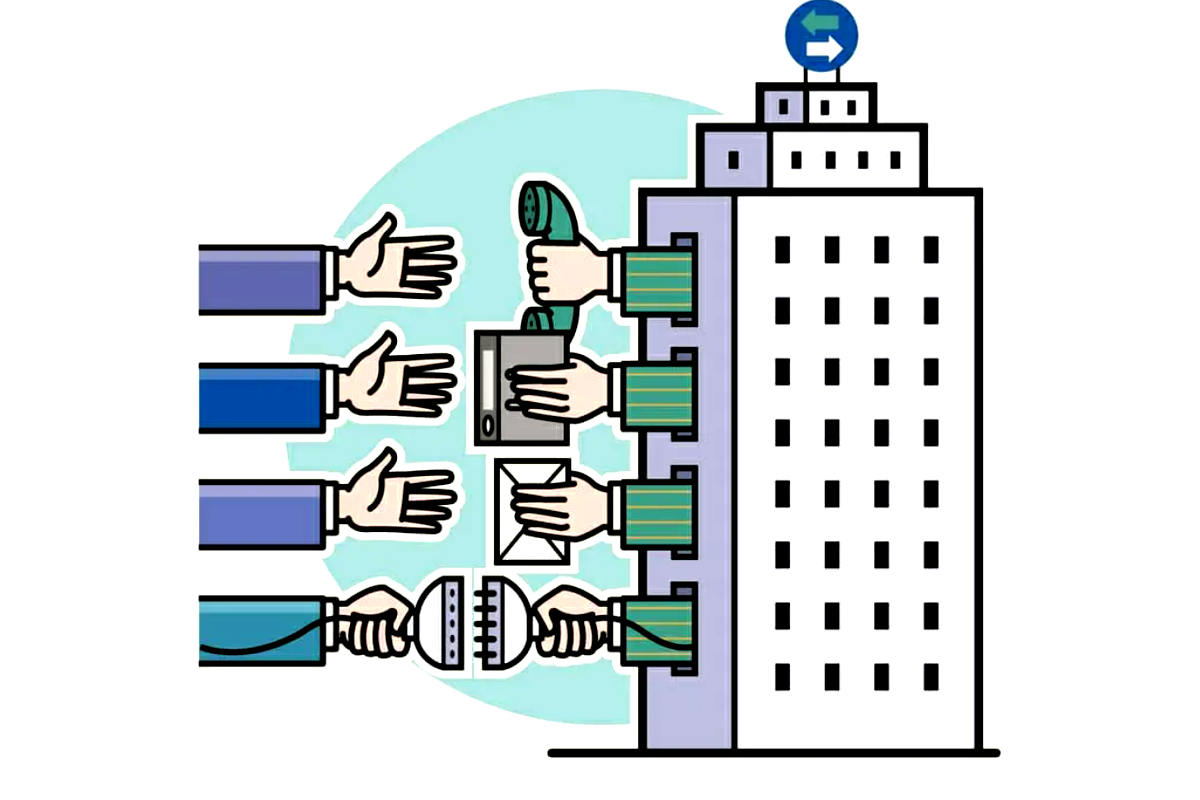 IT Outsourcing models are all about having tech-savvy partners who help keep your business on track.
IT Outsourcing models are all about having tech-savvy partners who help keep your business on track.
When you outsource software creation or maintenance tasks, you can focus your energy on managing your business while technical experts handle the intricacies. This approach saves both time and money, enabling your business to maintain competitiveness by staying updated with the latest technological advancements and trends.
Why Do Companies Choose to Outsource?
Companies primarily opt for IT outsourcing to cut expenses, particularly for tasks like automated network administration. Furthermore, recent challenges like retaining skilled employees, fierce talent competition, and staying abreast of new technologies have driven businesses toward outsourcing.
However, the motivations extend beyond these factors:
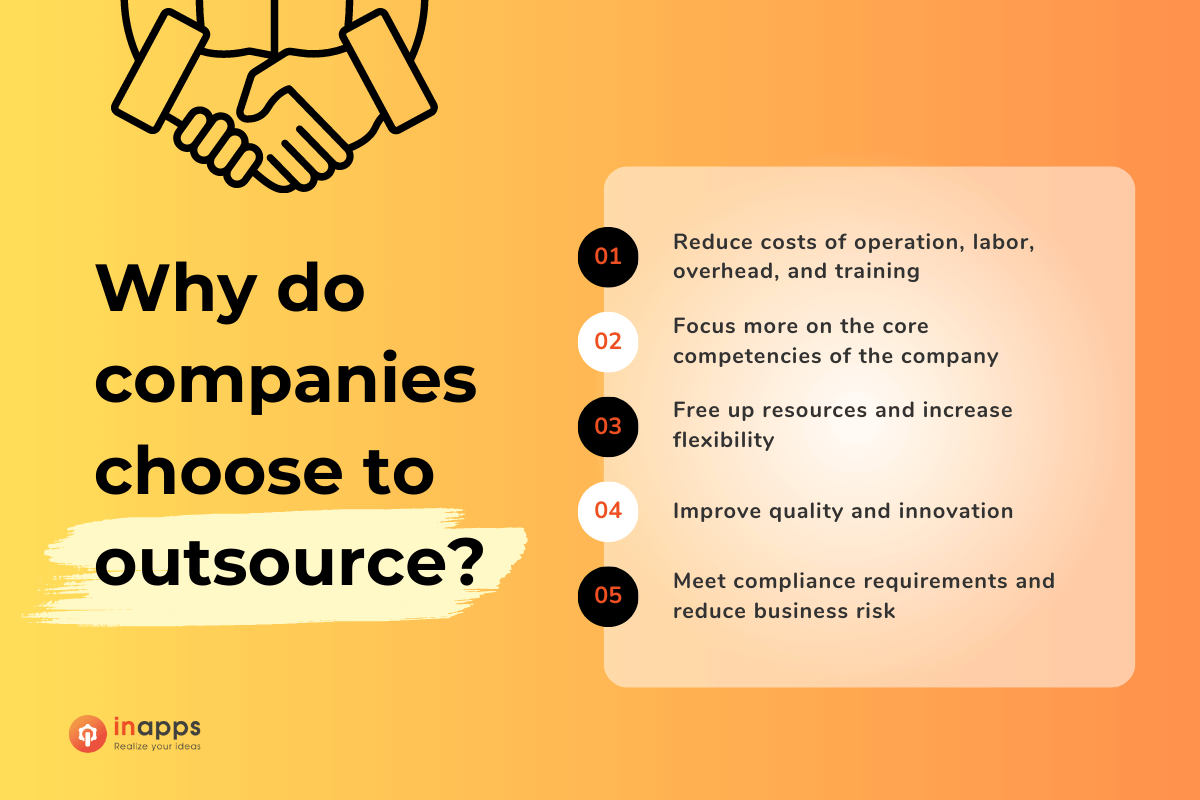 Why are many companies opting for IT outsourcing models?
Why are many companies opting for IT outsourcing models?
- Save money on operation, labor, overhead, and training costs: Outsourcing allows companies to hire external experts who can work for lower pay, with better efficiency and specialized skills.
- Focus better on what a company is good at: This approach helps businesses avoid getting sidetracked. It lets them put more resources into their main activities, making them better at what they do and keeping customers happy.
- Have more resources available and be more flexible: It lets companies tap into a bigger pool of talent and skills and adjust how many people they have working for them based on their needs. This approach prevents the issue of having an excessive or inadequate workforce.
- Achieve enhanced quality and innovation: IT outsourcing enables companies to learn from external experts with extensive experience and knowledge of the latest technologies.
- Compliance with regulations and reduced business risks: Outsourcing assists companies in adhering to laws, regulations, and ethical standards. Additionally, it equips them to manage unforeseen market changes, thanks to external experts’ expertise and resources in handling complex situations.
For further insights into IT outsourcing benefits, read: Diving into ODC vs IT Staff Augmentation: 11 Distincion Unveiled.
Now, let’s assess different IT outsourcing models and decide which fits specific technology requirements.
Types of IT Outsourcing Models: Two Main Points of View
When discussing software development outsourcing approaches, they are often categorized using two key aspects:
- The distance between teams (Location-based).
- The relationship between the client and outsourcer (Relation-based).
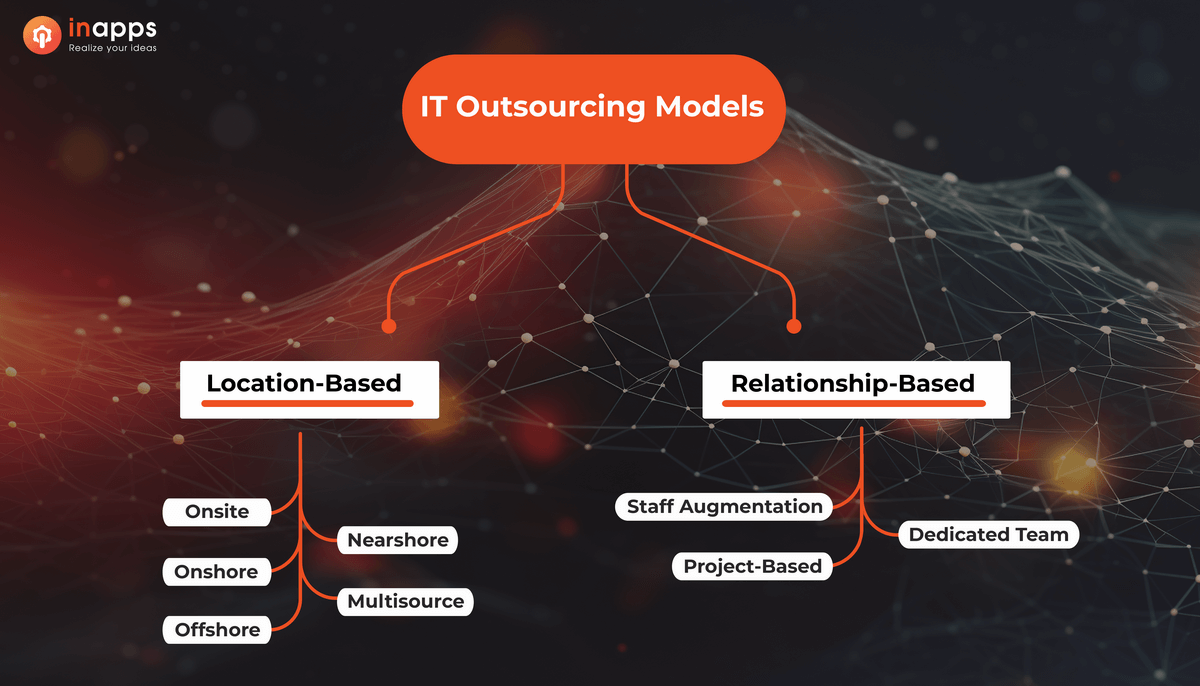
There’re 2 main models of IT outsourcing: Location-based vs Relation-based.
These interrelated aspects offer two perspectives to comprehend the diverse range of possible outsourcing arrangements.
5 popular location-based IT outsourcing models
A practical IT outsourcing approach looks beyond expenses and skills. It also takes into account important factors like time zones, cultural compatibility, and solid technology capabilities. We considered these factors while evaluating the top countries for outsourcing software development. That’s why the location of the IT outsourcing company is a critical factor to consider.
The pivotal aspect is the proximity of your outsourced team to your location. We can categorize location-based IT outsourcing into five main types. Before delving into the details of each, let’s briefly compare these five location-based outsourcing models to provide an overview. Once you’ve figured out which IT model suits you, simply scroll to learn more.
|
Location-based IT outsourcing models |
Definition | Advantages | Challenges |
| Onsite |
|
|
|
| Onshore |
|
|
|
| Offshore |
|
|
|
| Nearshore |
|
|
|
| Multisource |
|
|
|
1. Onsite outsourcing
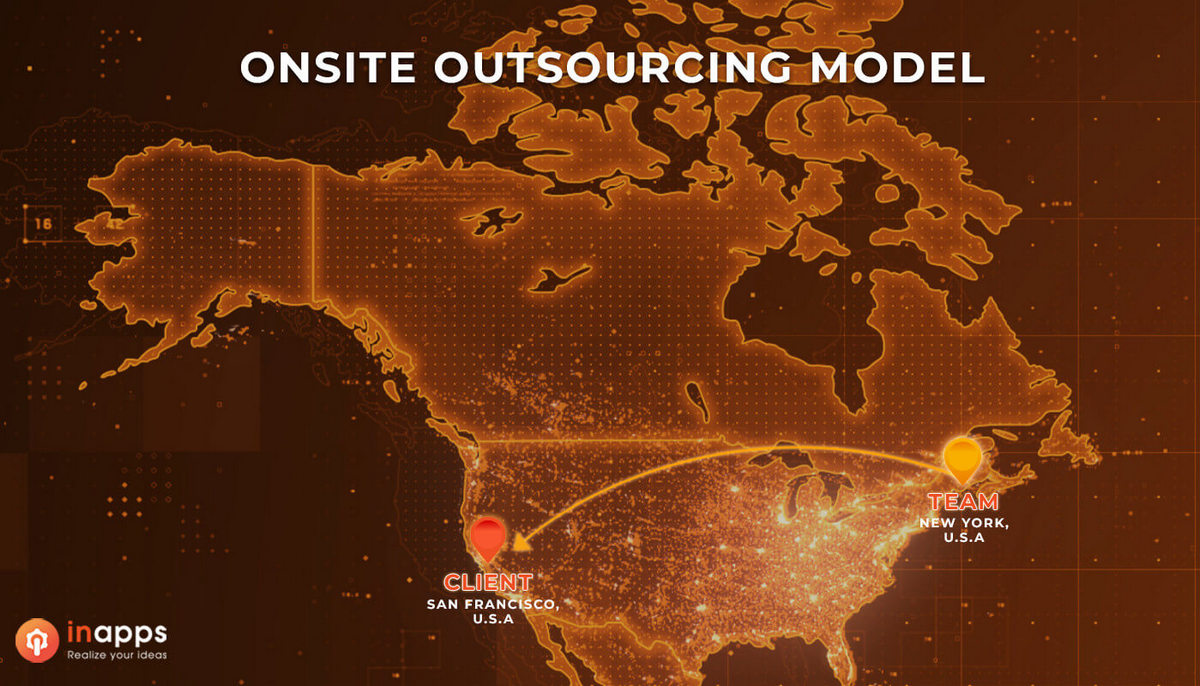
The onsite model fills a short-term or press skill gap in your team.
Onsite outsourcing, often referred to as ‘onsite,’ involves hiring a company to deploy skilled workers to your office for a specified period. This team works closely with your staff. Working collectively, they gather information, create plans, execute tasks, and ensure smooth operations. It’s like having extra team members, even though they’re not officially part of your company.
| Pros | Cons |
|
|
Ideal use cases:
- Filling a short-term or pressing skill gap in your team, such as specialized technology, complex projects, or a new product launch.
- Enhance oversight and communication with the provider’s team by directly supervising the outsourced work.
- Safeguard sensitive information and adhere to regulations by maintaining confidential data and processes within your premises.
2. Onshore outsourcing
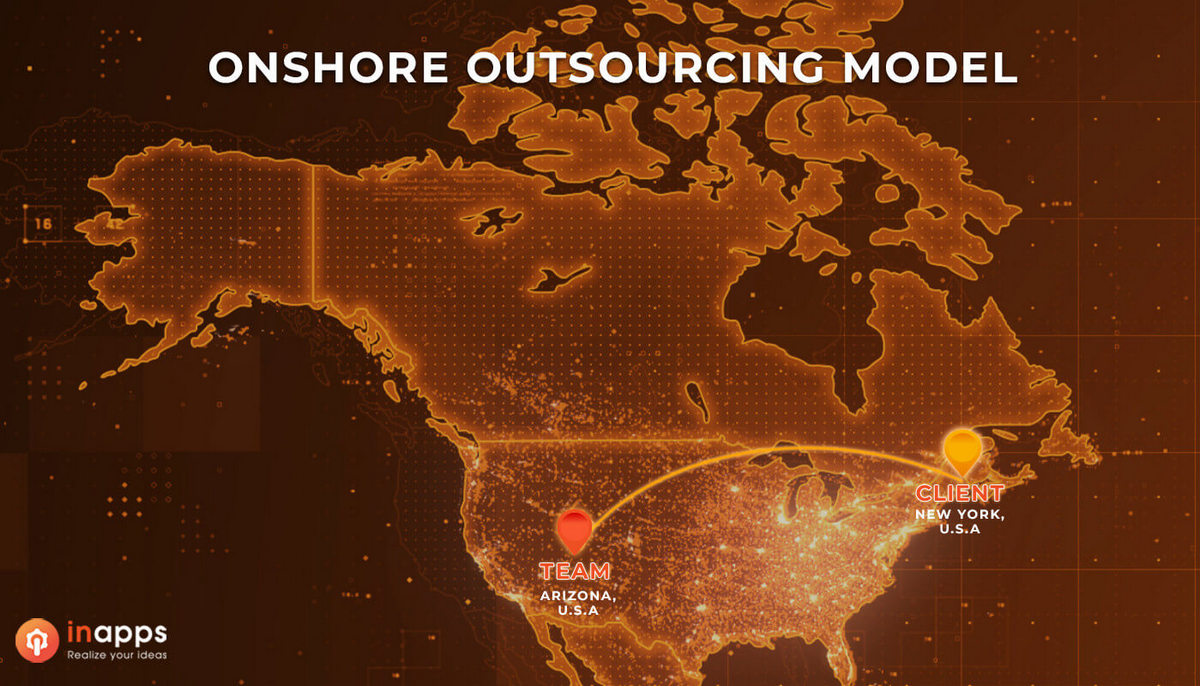
Onshore outsourcing provides smooth communication due to shared language, time zone, and local connections.
Onshoring, or onshore outsourcing, refers to outsourcing services to a provider within your own country, although not necessarily in your city.
Besides, the primary difference between this approach and onsite outsourcing lies in collaborating with an external team located in different geographical areas.
| Pros | Cons |
|
|
Ideal use cases:
- Follow local laws and rules that might restrict offshore or nearshore outsourcing, such as data security.
- Enhance communication and collaboration by partnering with providers who share your language and understand your region well.
- Leverage your providers’ market knowledge to enhance customer satisfaction. This outsourcing model tailors services to align with your customers’ preferences.
- Help your local community and feel good about it. Onshore outsourcing creates jobs for people in your area and helps your country grow.
3. Offshore outsourcing
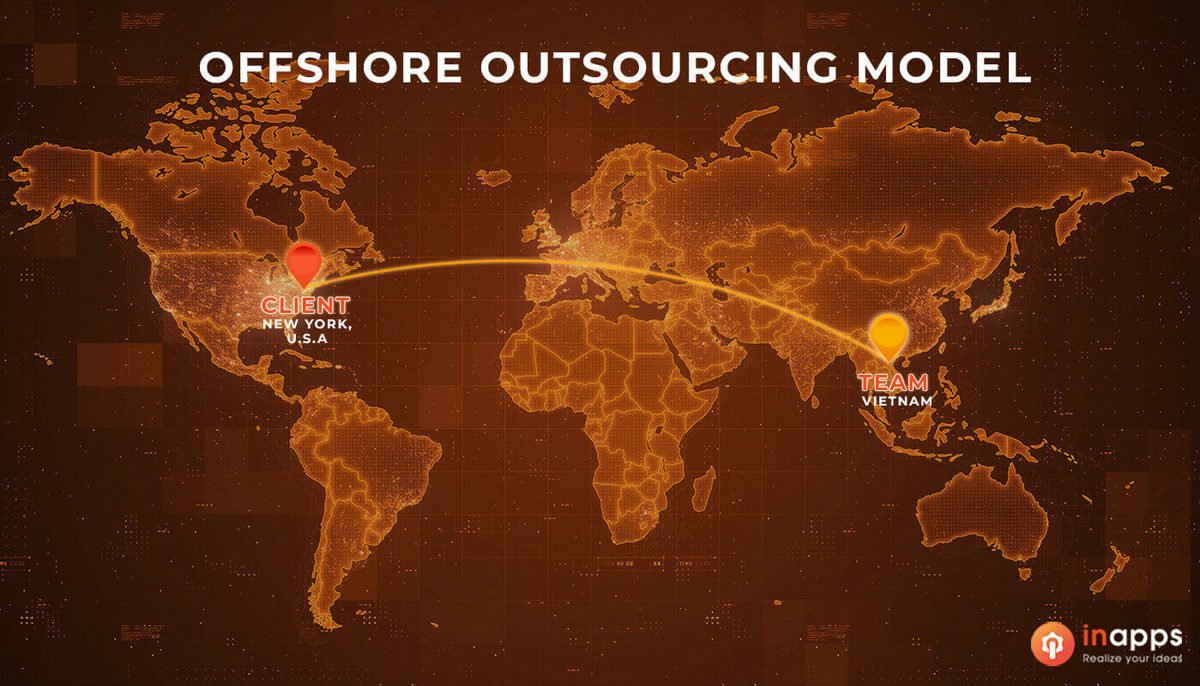
With an IT outsourcing model like offshore, you can focus on what you do best by giving routine tasks to others.
Offshoring, often known as offshore outsourcing, involves outsourcing services to a provider in a distant country.
On the other hand, there’s the offshore form of outsourcing, which involves hiring software engineers located more than 6 time zones away from your location.
For example, when a US company outsources software development to a region like Southeast Asia, such as Vietnam, it exemplifies offshore collaboration.
| Pros | Cons |
|
|
Ideal use cases:
- Reduce costs by outsourcing to countries with lower expenses, such as Vietnam, India, China, or the Philippines. This enables you to hire external experts at more affordable wages.
- Access additional skills in areas like software development, customer service, or accounting. External providers often possess more expertise.
- Focus on what you do best by giving routine tasks to others.
- Provide 24/7 customer support to global clients by partnering with providers in various time zones.
4. Nearshore outsourcing
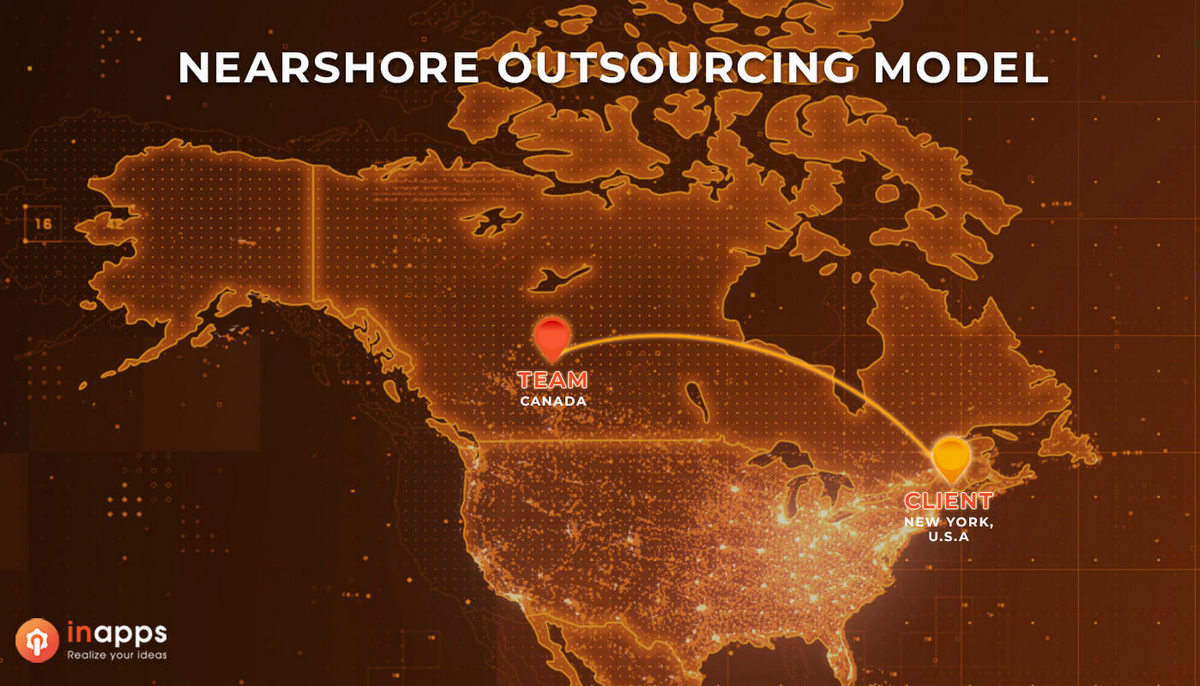
With Nearshoring, you can benefit from easier communication and collaboration, as it operates in similar time zones.
Nearshoring, often called nearshore outsourcing, involves outsourcing services to a provider in a neighboring or nearby country, typically within the same time zone.
In today’s business landscape, companies are increasingly directing their attention towards expanding their external teams to neighboring regions such as Eastern Europe or Latin America rather than solely considering India. As a result, businesses are finding the nearshore outsourcing model attractive due to its potential for cost reduction and the facilitation of long-term innovation.
Delving into nearshore software development services is a wise decision, as this approach combines the advantages of onshoring and offshoring while mitigating the risks associated with the latter.
| Pros | Cons |
|
|
Ideal use cases:
- Choose nearshore outsourcing to cut costs and enjoy shared time zones and cultural alignment.
- Follow regional laws (e.g., data privacy) by hiring providers with similar norms to avoid legal problems.
- Use IT nearshore outsourcing for a better understanding of local customer needs, leading to enhanced satisfaction.
- Contribute to the local economy and community, showcasing social responsibility through job creation and regional growth.
5. Multisource outsourcing
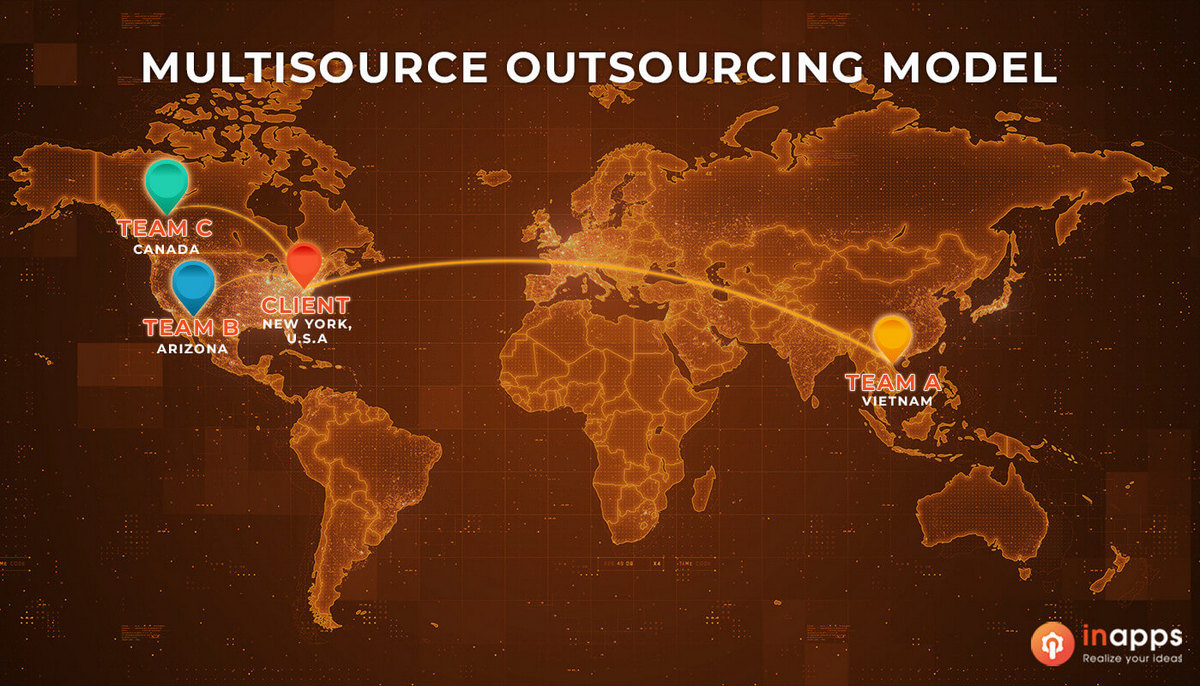
Multisourcing allows you to leverage the strengths of different providers in various locations.
Multisourcing, also known as multisource outsourcing, involves simultaneously utilizing multiple outsourcing arrangements from various providers. This strategy is commonly employed by larger companies to secure the most suitable provider for each specific requirement.
Why confine yourself to a single approach when you can blend several? Multisourcing allows you to leverage the strengths of different providers in various locations, diverging from the conventional practice of engaging with a single company. When executed skillfully, multisource outsourcing enables you to assemble the right expertise for each facet of your project or IT service, all while optimizing costs and achieving favorable outcomes.
| Pros | Cons |
|
|
Ideal use cases:
- Use multisource outsourcing for varied products/services, reducing risks and adapting to change.
- Opt for multisource outsourcing when you aim to foster healthy competition among suppliers. It enables you to acquire high-quality products at competitive prices.
- Get diverse ideas and tech, boosting your work.
- Select multisource outsourcing when you seek enhanced control over your outsourcing operations.
Exploring the Three Relationship-Based IT Outsourcing Models
Another crucial decision revolves around the nature of the partnership with the outsourcing company. This decision entails determining how responsibilities related to management and ownership are shared between your organization and the outsourced team. In this section, you’ll also find a helpful comparison table outlining the three primary models of relationship-based IT outsourcing. Let’s delve into the distinctions among these models.
| Relationship-based IT Outsourcing Model | Description | Pros | Cons |
| Staff Augmentation |
|
|
|
| Dedicated Team |
|
|
|
| Project-Based |
|
|
|
1. Staff augmentation model
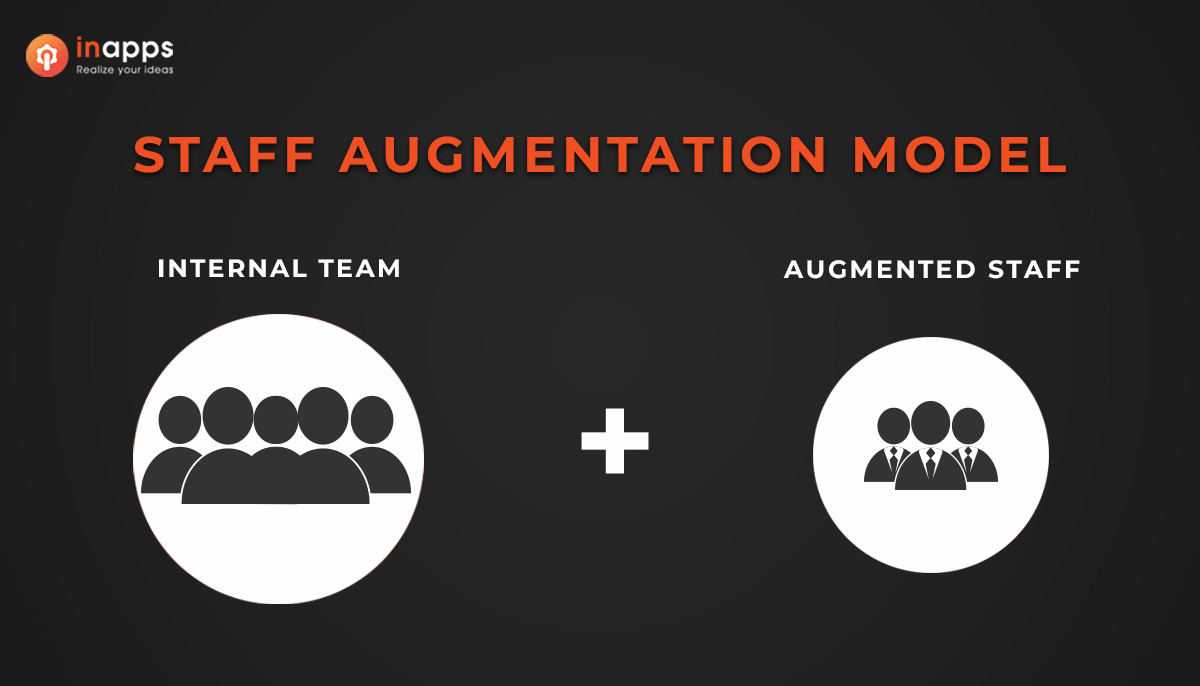
IT staff augmentation is one of the best IT outsourcing models that can help you save a lot of expenses.
Staff augmentation models place most of the accountability on your side as the client. With this approach, you’re essentially leasing workers from an outsourcing partner to support your internal development initiatives.
Imagine you already have a team of dedicated experts working on a project, but you require a QA specialist to ensure the proper functionality of the product. Instead of undergoing a lengthy and expensive hiring process for a one-time requirement, you can opt for a staff augmentation model.
This approach allows you to ensure the continued progress of your project and effectively address skill gaps. It represents an innovative and cost-efficient method to expand your software development team, particularly beneficial for short-term collaborations.
| Pros | Cons |
|
|
Ideal use cases:
- Fill temporary skill gaps, address urgent tech needs, or manage new launches by onboarding skilled professionals.
- Retain control over project management, enhance communication, and seamlessly integrate augmented staff.
- Swiftly adapt your team to changing projects, paying for the exact skills and hours needed.
- Ensure the security of sensitive data on-site with compliant increased staff.
2. Dedicated team model
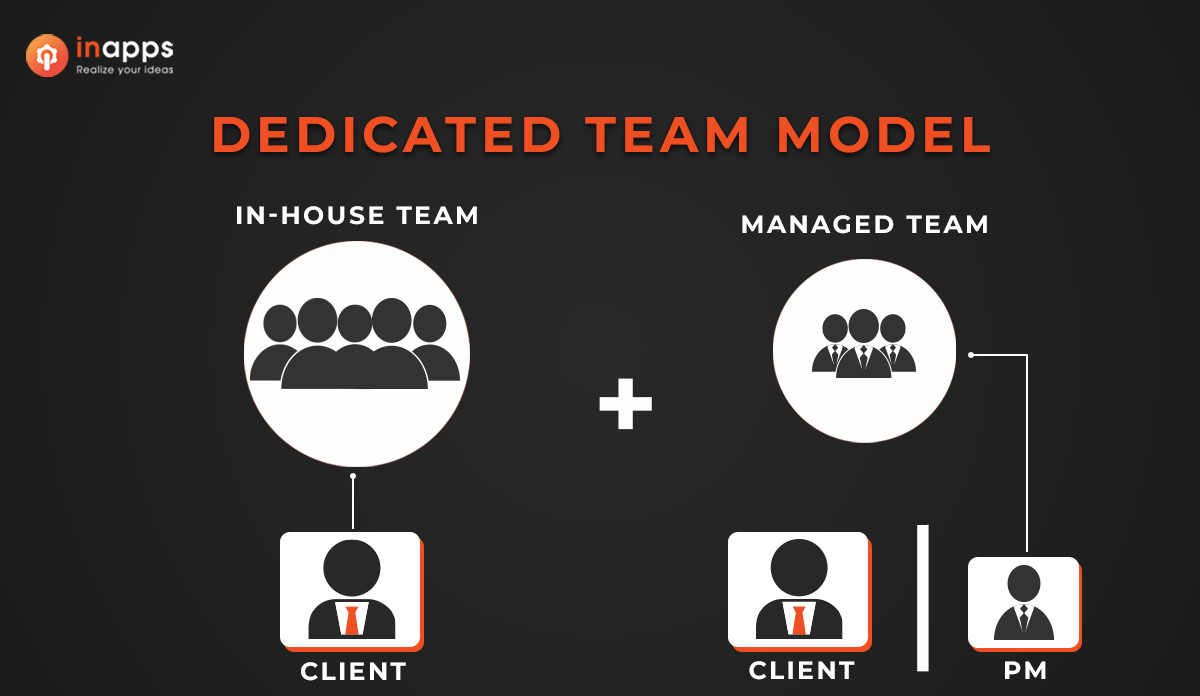
By opting for the dedicated team model, you will share project risks and responsibilities with the outsourcing company.
The dedicated or managed team is an intermediary outsourcing solution positioned between staff augmentation and a complete outsourced strategy.
With this approach, your outsourcing partner creates a dedicated team of experts solely for your project. This team can encompass various roles, such as software engineers, QA specialists, business analysts, and project managers, tailored to your project’s demands.
By opting for the dedicated team model, you will share project risks and responsibilities with the outsourcing company. This IT outsourcing model is particularly advantageous for intricate, long-term projects requiring high expertise.
| Pros | Cons |
|
|
Ideal use cases:
- Embark on complex and demanding projects that necessitate specialized skills and expertise exclusively dedicated to your tasks.
- Establish a committed and lasting partnership for projects that demand continuous development, adaptation, and enhancement.
- Harness domain-specific knowledge by forming a team with profound expertise in your industry, leading to superior project outcomes.
- Maintain direct control over project management, execution, and communication while leveraging external insights.
- Collaborate to distribute project risks, responsibilities, and accountability, resulting in more successful outcomes.
3. Project-based model
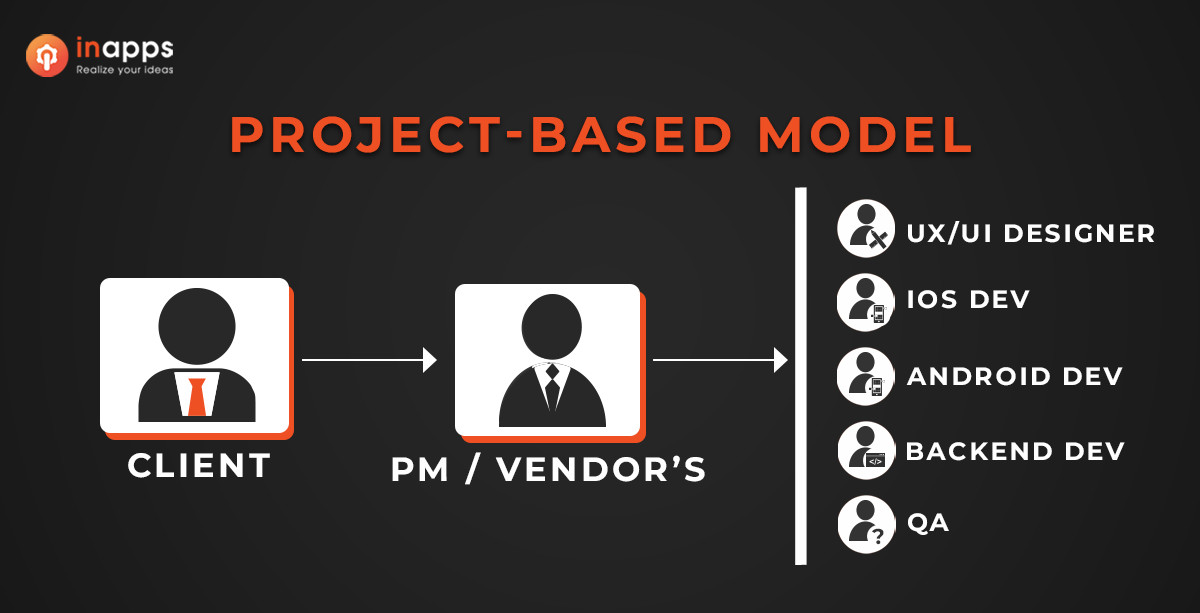
In contrast to earlier outsourcing models, you hand over the entire product development to your software outsourcing partner.
Unlike the earlier IT outsourcing models, in this approach, you entrust your software outsourcing partner with the complete product development and management process. The primary responsibility is to ensure that your requirements are well-documented and effectively communicated. You don’t require technical expertise, as the development company assumes responsibility for the project, freeing you to concentrate on your core business.
Under the project-based approach, you have a diminished level of control. The provider manages the project and makes decisions regarding the team and tools to be used for your project. However, you will receive regular updates on the progress of the work..
| Pros | Cons |
|
|
Ideal use cases:
- Possess well-defined and stable project requirements, enabling you to clearly outline expectations and deliverables.
- Seek to delegate the entire project management and execution to an external team, thereby liberating your resources for core business activities.
- Lack the technical expertise or resources to manage the project internally and prefer to rely on a specialized outsourcing partner.
- Need to swiftly initiate and complete a specific project without committing to long-term engagements or ongoing collaboration.
- Value updates on project progress while also being comfortable granting the outsourcing provider control over the process and team composition.
Which IT Outsourcing is Good for You?
Choosing the right IT outsourcing model is a critical decision that demands careful consideration. Whether you’re leaning towards location-based or relation-based software development, each approach comes with its own advantages and disadvantages.
The choice you make should align with factors such as project size, budget, timeline, and communication preferences. By comparing your requirements with the strengths of the various styles outlined above, you can swiftly navigate the realm of IT outsourcing and make an informed decision that suits your organization.
Furthermore, if your business is in need of offshore development services, IT staff augmentation, or custom app solutions, I encourage you to explore InApps – the Top 1 Mobile App Development in VietNam. With a dedicated team of over 100 experienced developers, designers, and project managers, InApps is well-equipped to cater to your needs. Feel free to delve into InApps and share how we can contribute to your projects. Thank you for your time and attention!
Let’s create the next big thing together!
Coming together is a beginning. Keeping together is progress. Working together is success.



















